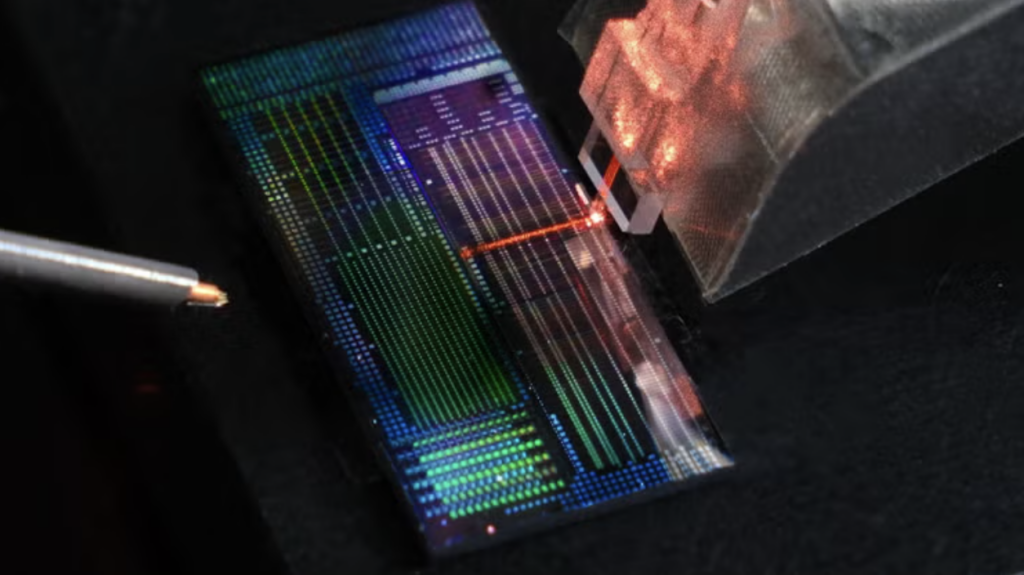Insider Brief
Scientists report on a new approach that can significantly improve the study and understanding of entanglement in quantum materials.
The researchers were led by Peter Zoller at the University of Innsbruck and the Institute of Quantum Optics and Quantum Information of the Austrian Academy of Sciences.
The team published their findings in Nature.

UNIVERSITY NEWS — Entanglement is a quantum phenomenon where the properties of two or more particles become interconnected in such a way that one cannot assign a definite state to each individual particle anymore. Rather, we have to consider all particles at once that share a certain state. The entanglement of the particles ultimately determines the properties of a material.
“Entanglement of many particles is the feature that makes the difference,” emphasizes Christian Kokail, one of the first authors of the paper now published in Nature. “At the same time, however, it is very difficult to determine.”
The researchers led by Peter Zoller at the University of Innsbruck and the Institute of Quantum Optics and Quantum Information (IQOQI) of the Austrian Academy of Sciences (ÖAW) now provide a new approach that can significantly improve the study and understanding of entanglement in quantum materials. In order to describe large quantum systems and extract information from them about the existing entanglement, one would naively need to perform an impossibly large number of measurements. “We have developed a more efficient description, that allows us to extract entanglement information from the system with drastically fewer measurements,” explains theoretical physicist Rick van Bijnen.
In an ion trap quantum simulator with 51 particles, the scientists have imitated a real material by recreating it particle by particle and studying it in a controlled laboratory environment. Very few research groups worldwide have the necessary control of so many particles as the Innsbruck experimental physicists led by Christian Roos and Rainer Blatt. “The main technical challenge we face here is how to maintain low error rates while controlling 51 ions trapped in our trap and ensuring the feasibility of individual qubit control and readout”, explains experimentalist Manoj Joshi. In the process, the scientists witnessed for the first time effects in the experiment that had previously only been described theoretically. “Here we have combined knowledge and methods that we have painstakingly worked out together over the past years. It’s impressive to see that you can do these things with the resources available today,” says an excited Christian Kokail, who recently joined the Institute for Theoretical Atomic Molecular and Optical Physics at Harvard.
Shortcut via temperature profiles
In a quantum material, particles can be more or less strongly entangled. Measurements on a strongly entangled particle yield only random results. If the results of the measurements fluctuate very much – i.e., if they are purely random – then scientists refer to this as “hot”. If the probability of a certain result increases, it is a “cold” quantum object. Only the measurement of all entangled objects reveals the exact state. In systems consisting of very many particles, the effort for the measurement increases enormously. Quantum field theory has predicted that subregions of a system of many entangled particles can be assigned a temperature profile. These profiles can be used to derive the degree of entanglement of the particles.
In the Innsbruck quantum simulator, these temperature profiles are determined via a feedback loop between a computer and the quantum system, with the computer constantly generating new profiles and comparing them with the actual measurements in the experiment. The temperature profiles obtained by the researchers show that particles that interact strongly with the environment are “hot” and those that interact little are “cold”. “This is exactly in line with expectations that entanglement is particularly large where the interaction between particles is strong,” says Christian Kokail.
Opening doors to new areas of physics
“The methods we have developed provide a powerful tool for studying large-scale entanglement in correlated quantum matter. This opens the door to the study of a new class of physical phenomena with quantum simulators that already are available today,” says Zoller. “With classical computers, such simulations can no longer be computed with reasonable effort.” The methods developed in Innsbruck will also be used to test new theory on such platforms.
The results have been published in Nature. Financial support for the research was provided by the Austrian Science Fund FWF, the Austrian Research Promotion Agency FFG, the European Union, the Federation of Austrian Industries Tyrol and others.
If you found this article to be informative, you can explore more current quantum news here, exclusives, interviews, and podcasts.

















